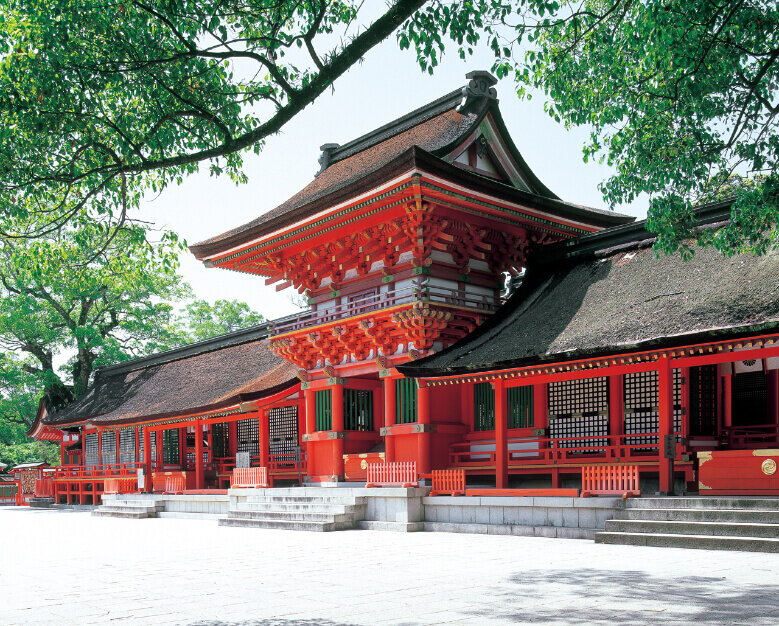
The trails of Kunisaki Peninsula. (Photo from: Visit Oita)
Nestled in the remote and picturesque northeastern part of Oita Prefecture and a few kilometres away from the renowned Beppu onsen town, the Kunisaki Peninsula boasts extensive mountain trails and temples erected by yamabushi (mountain priests) that extend all the way to the peninsula’s coastal areas. Home to the majestic Mount Futago, the peninsula is also revered as the birthplace of the syncretic religious culture known as shinbutsu shugo, a fusion of both the Shinto and Buddhist religions. This article explores a few of the historic sights and majestic views that you can explore in and around the peninsula.
Usa Shrine: A Sacred Abode of Hachiman

Usa Shrine. (Photo from: Visit Oita)
At the very base of Kunisaki Peninsula is Usa Shrine, the main shrine out of over 40,000 in Japan that is dedicated to Hachiman, the Shinto god of archery and war. The shrine was one of the earliest sites of the formation of shinbutsu shugo, a syncretic form of Shinto and Buddhist worship. The shrine also heavily influenced the culture of the Kunisaki Peninsula and shaped the local mountain’s religious practices. The tradition of carrying a mikoshi, or a portable shrine, during festivals in Japan stemmed from a practice that first began at Usa Shrine in the year 749, where a mikoshi carrying Hachiman-jin, an ancient Shinto deity, was transported to Nara to oversee the construction of the Great Buddha at Todaiji Temple. Much of Usa Shrine’s grounds are now surrounded by lush forest greenery that contrasts with the gleaming vermilion sanctuaries, torii gates, and bridges — today, Usa Shrine is one of the most important Shinto shrines in Japan.
Trekking through the peninsula: rokugo manzan, temples and unique monuments

Fukiji Temple amidst crimson foliage. (Photo from: Visit Oita)
The spiritual legacy of the Kunisaki Peninsula is found in rokugo manzan, the peninsula’s distinct pilgrimage culture that encompasses a fusion of Shinto, Buddhist, folk and Taoist rituals. Legend has it that the monk Ninmon founded 28 temples on the peninsula in the early 8th century, which was followed by his disciples carving out trails connecting each temple site, with each trail demanding but also imbued with spiritual meaning. Among the temples, there are the Futagoji Temple, located near the peak of Mount Futago which has a rich history of more than 1300 years, and the Fukiji Temple, the oldest wooden structure existing in the Kyushu region that dates back to the late Heian period (794–1185).
Making these treks, one is also able to find peculiar stone carvings and markers that are found on cliffsides and roadsides. One prominent example is the two mammoth Kumano Magaibutsu Stone Buddhas, which span over six metres in height and were built to watch over the area since their creation in the late Heian Period.



